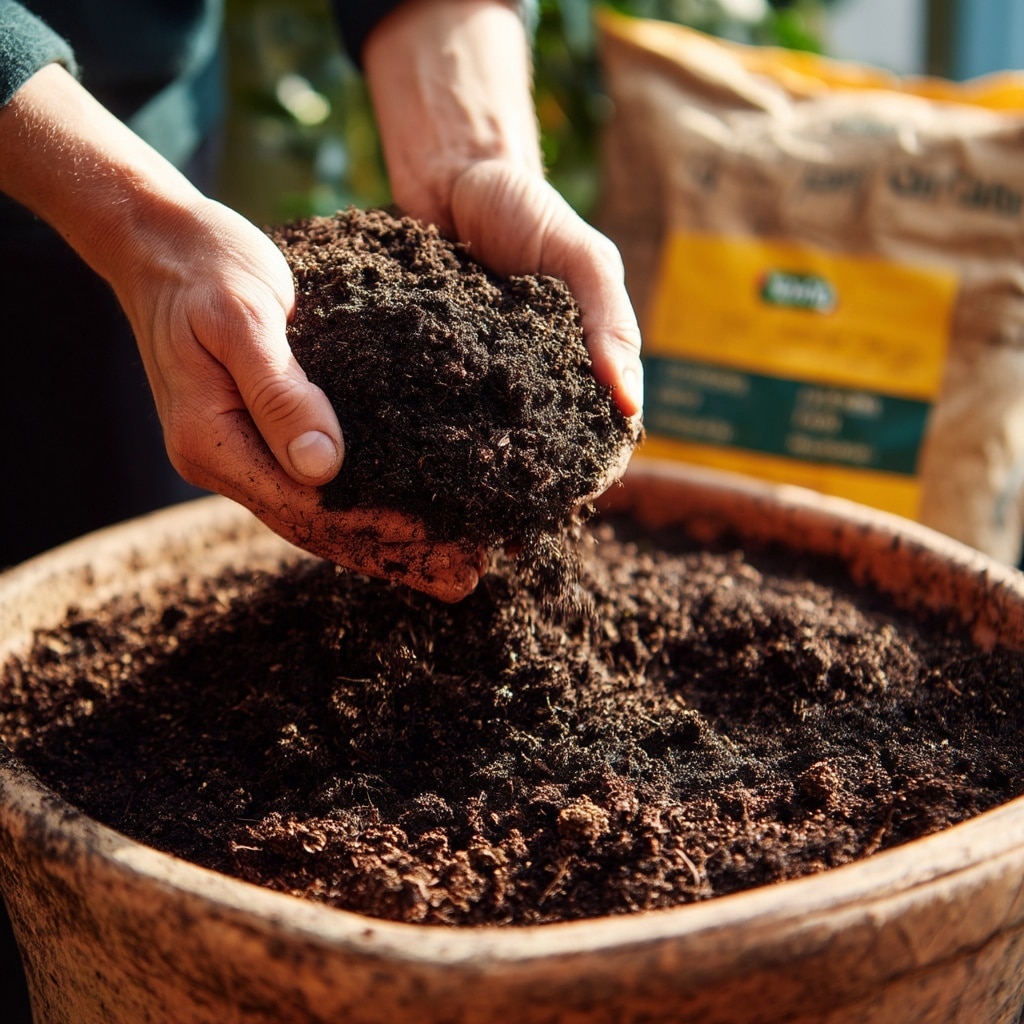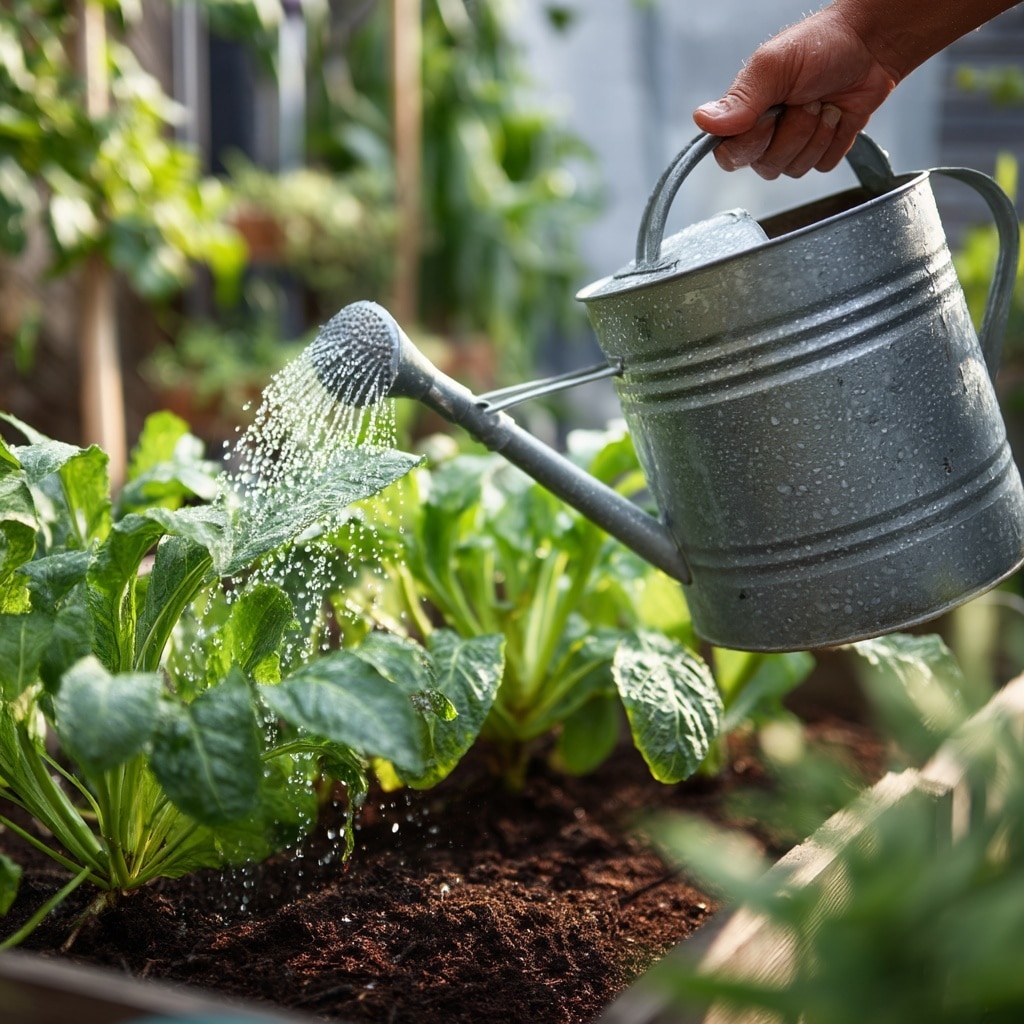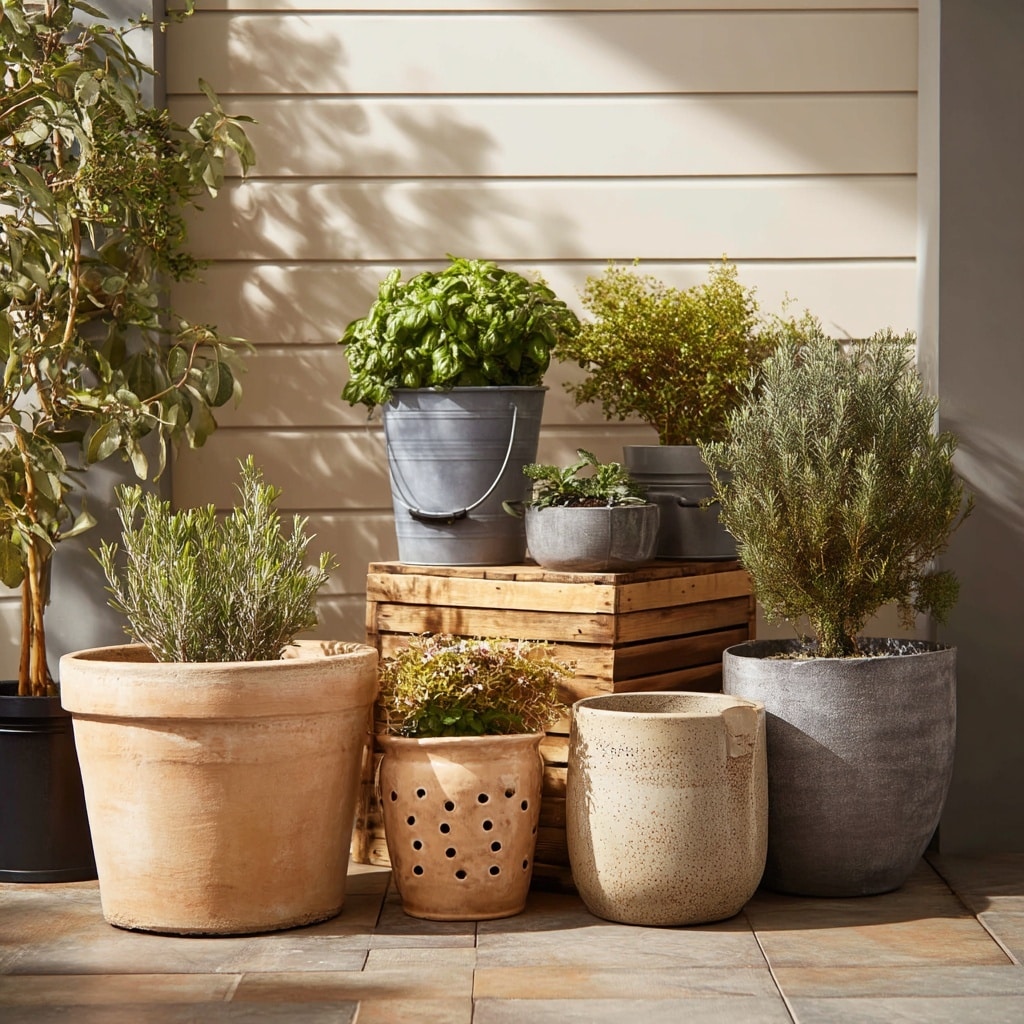Container gardening is one of the most accessible and creative ways to bring plants into your life—no backyard required. Whether you live in an apartment, have limited mobility, or simply want to brighten up your patio, this method offers a flexible and rewarding way to grow flowers, herbs, and even vegetables in just about any space. With a few smart choices and the right setup, anyone can enjoy the beauty and benefits of gardening right outside their door—or even on a sunny windowsill.
Table of Contents
Choosing the Right Container
When starting with container gardening, the first—and perhaps most important—decision is your container. Nearly any vessel can be transformed into a plant pot as long as it has proper drainage. This means at least two to four holes at the bottom so excess water can escape within 5 to 10 minutes after watering. Without drainage, roots sit in soggy soil, leading to rot and disease.
A common mistake is underestimating size. That small 6-inch pot might look fine indoors, but outside, it can seem lost and quickly dry out. Larger containers not only hold more soil—giving roots room to spread—but also retain moisture better, reducing how often you’ll need to water. They’re also more forgiving for beginners who may still be learning how to manage soil moisture and root space.
Don’t overlook inexpensive solutions. A five-gallon bucket—drilled for drainage—makes a durable and affordable container, especially for veggies or larger plants. Just ensure the material is safe and hasn’t been used for chemicals or oils. Local garden centers offer beautiful ceramic or resin options, but cost shouldn’t stop you from getting started.
When possible, group your containers together. This helps create a microclimate that retains moisture and gives your garden a cohesive look, whether on a balcony, patio, or porch.
Choosing the Right Soil for Container Gardening

One of the biggest keys to successful container gardening is using the right soil. While it might be tempting to grab a bag of cheap topsoil, resist the urge. Topsoil is too dense for containers and often drains poorly, which can smother roots and lead to unhealthy plants.
Instead, invest in high-quality potting soil—specifically blended for container use. These mixes are lighter, retain moisture without becoming soggy, and often contain slow-release fertilizers to give your plants a solid start. While potting soil costs more upfront, it pays off in healthier plants and fewer problems down the line.
Avoid the old gardening myth of placing rocks or gravel at the bottom of containers. This doesn’t improve drainage; in fact, it can create a water table effect, where moisture gets trapped near the roots. Let the soil and drainage holes do their job without barriers.
Over time, potting soil breaks down and loses structure. Plan to refresh the soil every 5–6 years by removing the old mix and starting with a fresh batch. In the meantime, you can top off your containers with a little new soil each spring to maintain volume and fertility.
Lastly, don’t forget about fertilizer. Even the best potting soils run out of nutrients mid-season. Look for a balanced fertilizer—labeled with even numbers like 10-10-10—to give your plants the nitrogen, phosphorus, and potassium they need. Apply according to the label, and your containers will stay lush and productive all summer long.
Watering Tips for Healthy Container Plants

In container gardening, watering is where many beginners either thrive—or struggle. Because pots dry out faster than in-ground gardens, staying on top of your watering schedule is essential. But how often should you water?
Early in the growing season, once or twice a week may be enough. But as summer heats up and plants mature, their root systems expand, and the soil volume fills up. By mid-to-late summer, especially in full sun, many containers need daily watering—sometimes even twice a day if they’re small or exposed.
Always check the soil before watering. Stick your finger about an inch deep. If it feels dry, it’s time to water. When you do, water thoroughly until you see it flowing from the drainage holes. This ensures roots are well-hydrated and not just the top layer of soil.
A major advantage of container gardening is mobility. If your plants are wilting or showing signs of stress from too much sun or wind, just move the pot to a shadier, more protected spot. This adaptability makes container gardening perfect for unpredictable weather or learning what plants like best.
To reduce watering needs:
- Use larger containers that hold moisture longer
- Group pots together to create shade and humidity
- Mulch the soil surface with straw or bark to slow evaporation
Stay consistent, and your plants will reward you with healthy growth and vibrant blooms or harvests.
Best Plants for Container Gardening

One of the joys of container gardening is the wide variety of plants you can grow in a compact space. Whether you’re after bold color or fresh greens for your salad, there’s something for every container and gardener.
🌺 Ornamental Plants
Annual flowers are some of the most popular choices for container gardens. Many varieties are bred specifically for pots, with compact growth habits and long bloom periods. Great options include:
- Petunias – Excellent for cascading over container edges
- Begonias – Thrive in shady spots with bright, cheerful blooms
- Geraniums – A container classic, available in many colors
- Sweet Alyssum – Low-growing with a sweet scent and soft texture
- Ageratum – Fuzzy blue-purple flowers that attract pollinators
These plants do well in a mix of sun and partial shade. Combine trailing, upright, and filler plants in one container for a professional-looking arrangement.
🥬 Edible Plants
Yes, you can grow vegetables and herbs successfully in containers—especially if you choose compact or fast-growing types. Some favorites include:
- Lettuce, spinach, and kale – Fast-growing and ideal for cut-and-come-again harvesting
- Radishes and carrots – Choose shorter root varieties
- Cherry tomatoes – Look for determinate or dwarf varieties
- Peppers – Both hot and sweet peppers do well in warm, sunny spots
- Herbs – Basil, parsley, thyme, and chives all thrive in containers
Edibles require full sun—at least 6 hours of direct light daily—so place your containers in the brightest spot you have. Use a potting mix designed for vegetables or herbs, and fertilize regularly for strong yields.
Mixing edibles and ornamentals in one container is not only practical, but beautiful. Try planting purple basil next to marigolds or pairing kale with pansies for an eye-catching edible display.
Conclusion
Container gardening makes growing plants more accessible, flexible, and fun—regardless of your space or experience. Whether you’re creating a vibrant floral display on your front porch or harvesting fresh greens from your balcony, container gardening puts creativity and nature within reach. With the right containers, soil, and care, your plants can thrive in even the smallest urban nook or suburban patio.
And remember, if something’s not working—just move it! That’s the beauty of gardening in pots. It’s gardening on your terms.


